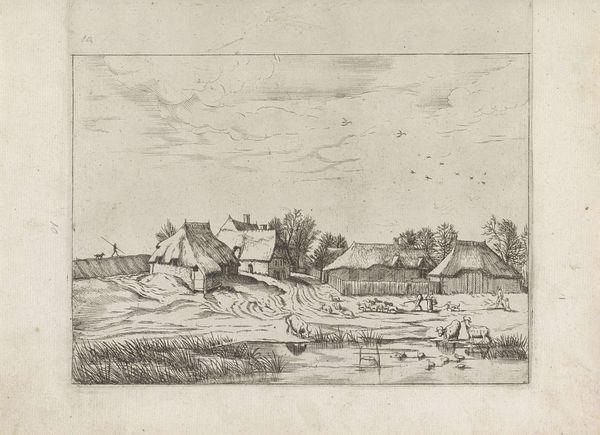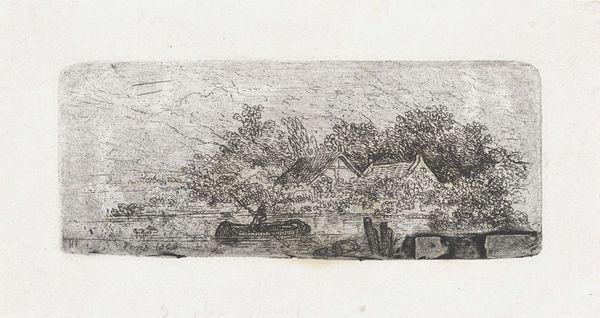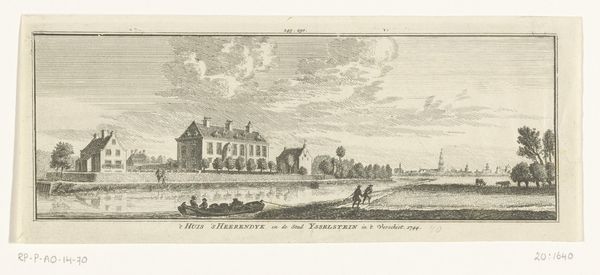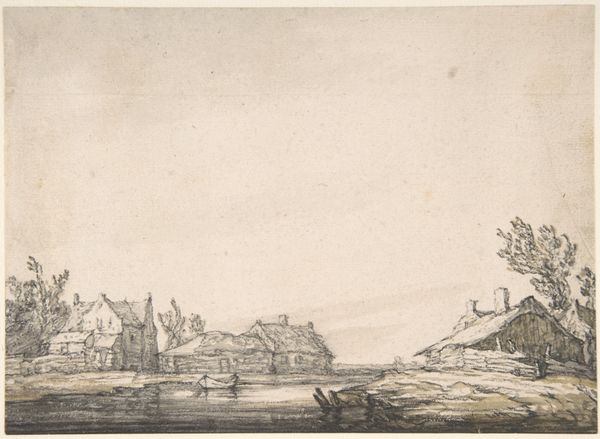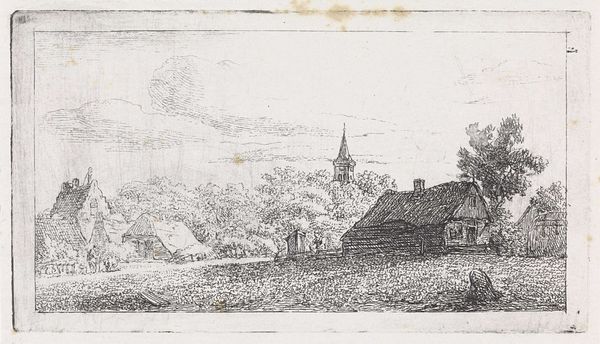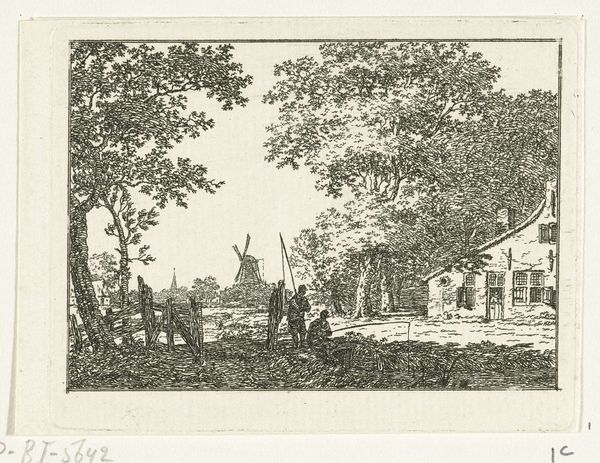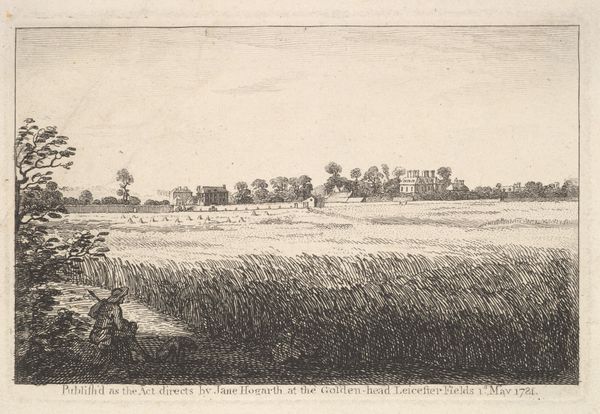
drawing, print, engraving
#
drawing
#
baroque
#
dutch-golden-age
# print
#
landscape
#
river
#
cityscape
#
engraving
#
building
Dimensions: Sheet: 1 7/8 × 6 7/16 in. (4.7 × 16.4 cm)
Copyright: Public Domain
Curator: Here we have Wenceslaus Hollar’s “Rüsselsheim,” created between 1642 and 1644. This print, using engraving techniques, showcases the city along the Main River. Editor: My immediate impression is one of subdued elegance. The delicate lines of the engraving lend a quiet formality, but I'm intrigued by the way the light reflects on the water. The entire scene feels quite balanced between human activity and nature's presence. Curator: It’s interesting that you mention balance, because as a cityscape, “Rüsselsheim” isn't just about capturing a place; it's about the symbolism of civic pride and perhaps even a sense of established order within a bustling trade route. Editor: I agree. Looking at the methods, printmaking democratizes image distribution; it makes representations like this, showing orderly society and trade, more widely accessible. That would have surely played into solidifying burgher's values, showing what it is to live in such a well established port city. Also the fineness of detail achievable in this engraving must be directly related to the quality and design of the metal tools used! Curator: Precisely. The choice of such an exacting medium would highlight and idealize civic virtues of Rüsselsheim for a wider audience, and even perhaps connect it to its past associations with river commerce. Notice the careful rendering of architecture in conjunction to trade on the river. All are integral parts of what made up life for burghers at the time. Editor: Right, and to your point, engravings such as this allowed detailed replication to be widely sold throughout Europe and beyond, a material shift in knowledge of the world. Its very format facilitated trade, not only materially speaking as a trade commodity, but visually showcasing it to people across space and time. It makes me think, how has our concept of a cityscape changed with contemporary production methods in say, photography? Curator: A fascinating question! This engraving presents not only a factual document, but is also steeped in symbolism. This perspective allowed Hollar to preserve an image of ideal, or, historical life for audiences who may or may not ever get to visit Rüsselsheim. Editor: So true. Looking closely at how Hollar was both working and depicting work makes me curious about visiting and tracing back his steps using modern materials! Curator: An excellent thought—tracing those steps with a blend of historical understanding and a look towards our own moment of making and re-making.
Comments
No comments
Be the first to comment and join the conversation on the ultimate creative platform.


